Spring vs Autumn Color Analysis: Understanding the Differences

Key Takeaways
- Knowing if your warm undertones are golden or peachy helps determine whether you lean Spring or Autumn.
- Observe how your skin, eyes, and hair react to different colors and lighting to uncover your most flattering palette.
- Spring palettes thrive on clear, light, and fresh colors; Autumn palettes favor deep, muted, earthy tones.
- Fabric textures matter—breezy cottons for Spring, rich wools for Autumn—impacting both look and feel.
- Ambiguous features? Borrow thoughtfully from sister seasons and build a personal, versatile wardrobe.
- Dial in core neutrals and accent colors so everything mixes easily—makeup and accessories included.
Spring vs Autumn color analysis compares two warm seasonal palettes used in personal color analysis. Spring colors feel soft-warm and fresh; Autumn colors are rich, warm, and grounded. The right palette adds glow and coherence—below, see how they differ and how to apply them.
The Warm Undertone Foundation
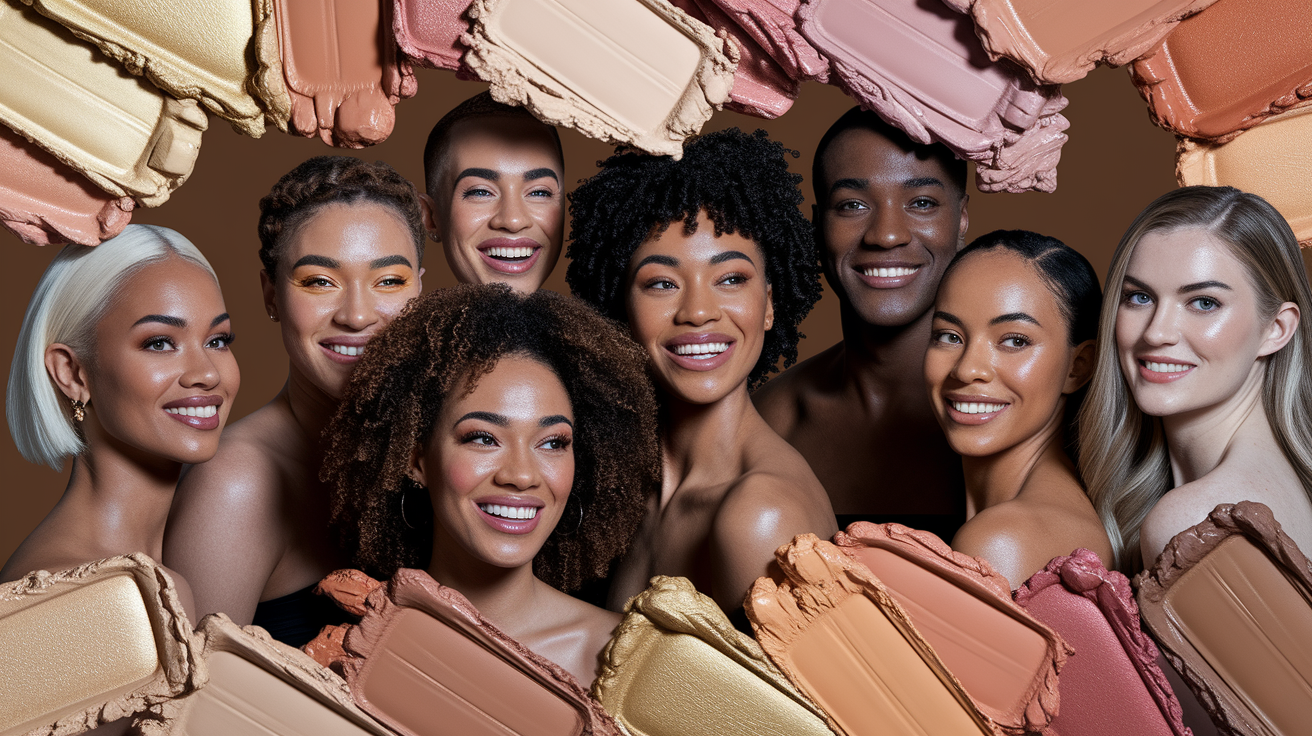
Warm undertones guide how tones reflect on your skin and which color schemes will complement you. Understanding these undertones helps you highlight your natural features.
Golden vs. Peachy
Golden undertones (often in Autumn palettes) have a yellow/olive cast. Think burnt orange, rich gold, and moss green—these shades shimmer on golden skin.
Peachy undertones lean toward a soft, pinkish warmth (often in True Spring). Coral, light apricot, and creamy beige look luminous and rejuvenating.
Test by swatching: if golden-yellow blends in, you likely lean Autumn; if peach tones glow, you likely lean Spring.
| Undertone | Best Colors | Typical Season |
|---|---|---|
| Golden | Burnt orange, olive, mustard | Autumn |
| Peachy | Coral, apricot, cream | Spring |
Your Natural Coloring
Hair, eyes, and skin offer clues. Warm brown eyes or golden-blonde hair often imply Autumn; light golden hair with clear, light eyes can imply Spring. Track what makes your skin look alive in natural light.
Beyond Surface Color
Warmth and coolness go beyond surface tone. Always verify colors in natural daylight. Let real-life cues—compliments, selfies, and repeated wins—guide your selections.
Key Facts
Warm undertones (golden/yellow/olive) add glow and look natural across a range of depths. Sample a few shades and evaluate in good lighting to find the best match.
How to Analyze Spring vs Autumn Colors
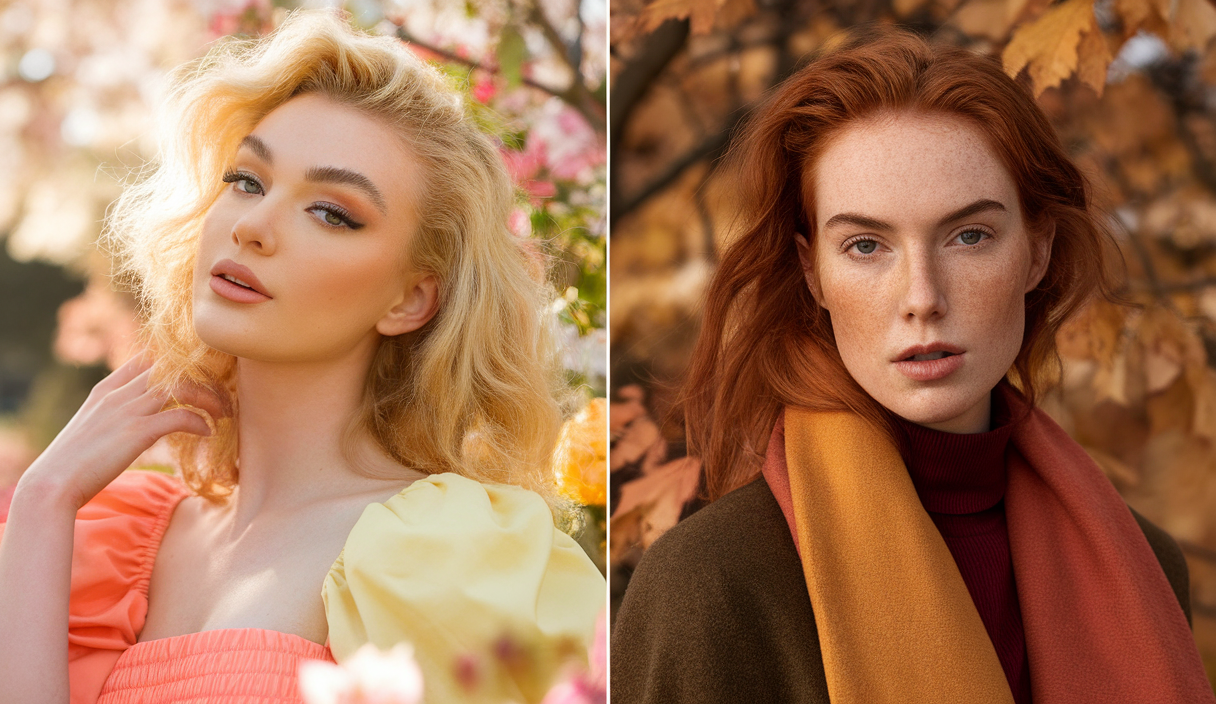
Start by examining your coloring under different lighting to determine whether you fit Spring’s light, bright warmth or Autumn’s rich earthiness.
1. The Skin Response

Does your face brighten in soft, light golds, peach, or clear blues? You may be Spring. Glow with olive, rust, or forest green? You may be Autumn. Avoid shades that make skin look sallow or ashen.
2. The Eye Pattern
Springs often have bright, clear eyes (blue/green/light hazel). Autumn eyes are rich and earthy (brown, dark green, warm hazel with gold). Hold palettes near the eyes and see which resonates.
3. The Hair Highlights
Springs: golden, honey, or light strawberry tones; Autumns: chestnut, auburn, or deep red. Evaluate whether golden or coppery highlights harmonize with your skin and eyes.
4. The Drape Test
Hold fabrics under your chin. Spring colors (coral, butter yellow, mint) should feel lively; Autumn tones (rust, moss, ochre) should look warm and grounded.
5. The Lipstick Litmus
Try peachy corals (Spring) vs. brick reds (Autumn). Track finishes and hues that consistently flatter.
The Spring Palette Unveiled
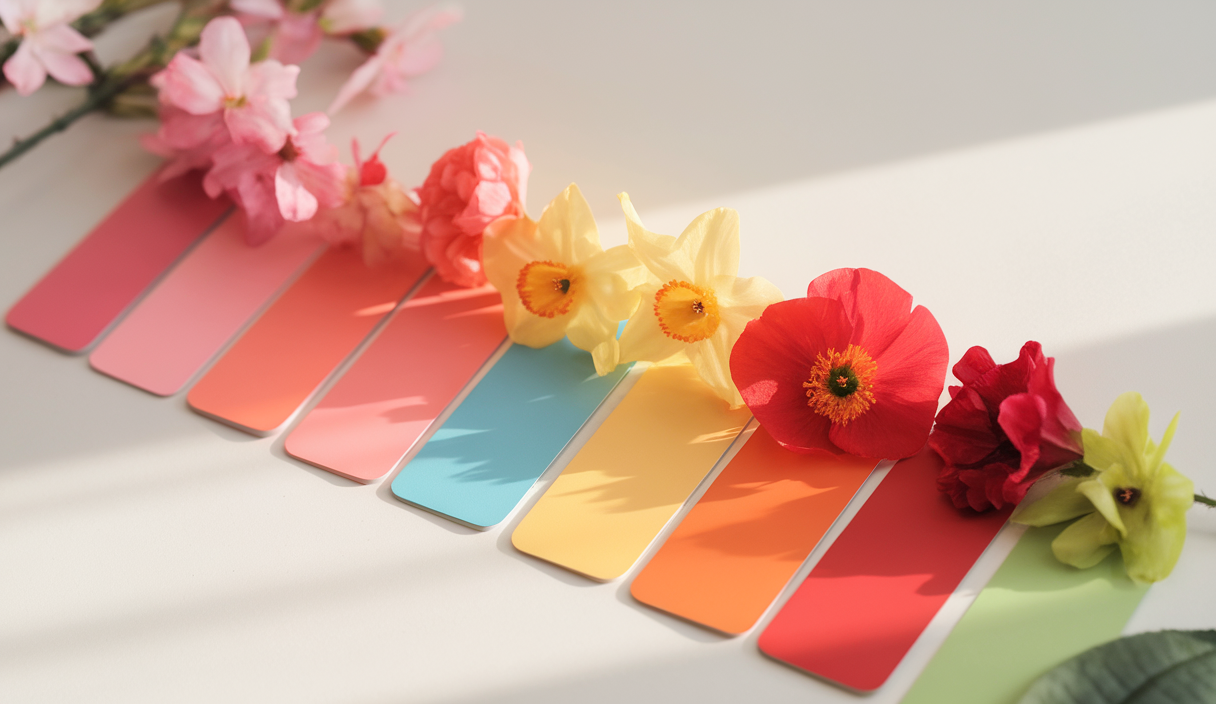
The Spring palette is bright, lively, and warm—think sunny mornings and airy energy. It flatters warm undertones and often those with golden hair, light eyes, and radiant complexions.
Clear and Bright
Vivid, crisp colors define Spring: poppy red, tangerine, daffodil yellow. Try tops or scarves in turquoise or apple green for easy wins.
Light and Fresh
Pastel pink, baby blue, and mint green deliver a soft, breezy feel. Pair with cream or camel for a polished, effortless look.
Best Fabric Textures
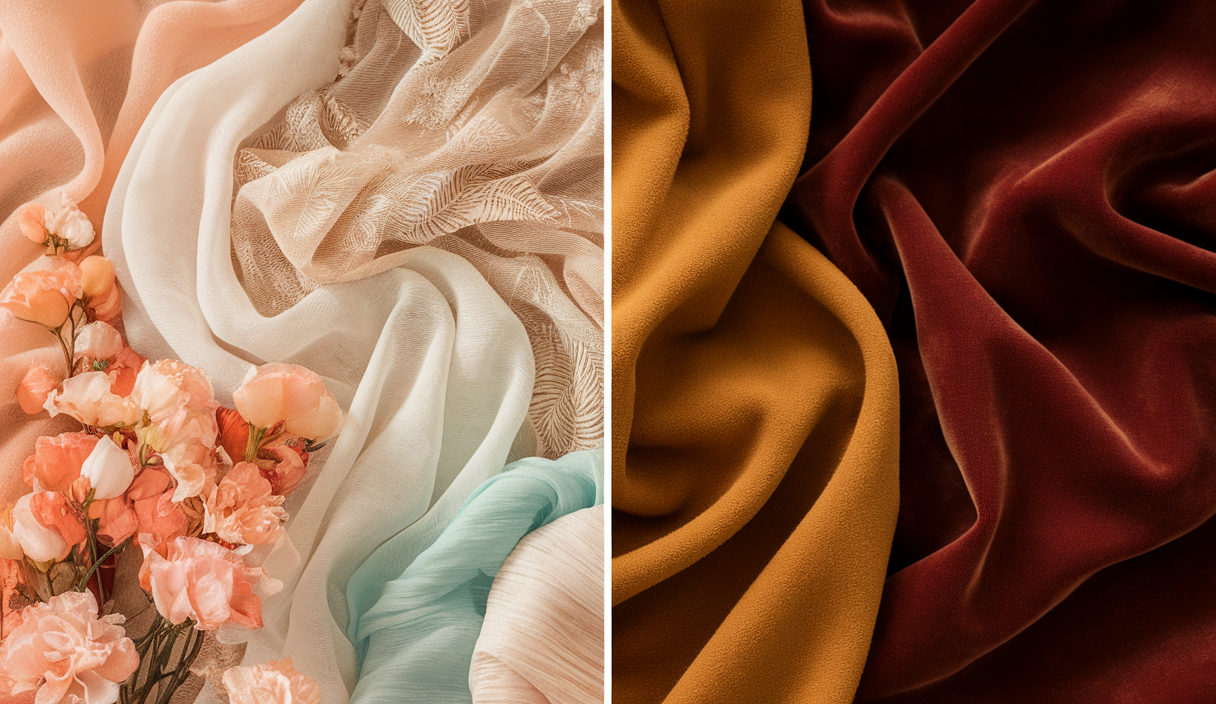
Spring shines in light, airy fabrics like cotton, linen, and soft silk. Heavy textures can weigh the palette down.
| Fabric Type | Spring Palette | Autumn Palette |
|---|---|---|
| Cotton | Yes | Yes |
| Linen | Yes | Sometimes |
| Silk | Yes | Sometimes |
| Wool | Rarely | Yes |
| Velvet | No | Yes |
The Autumn Palette Unveiled
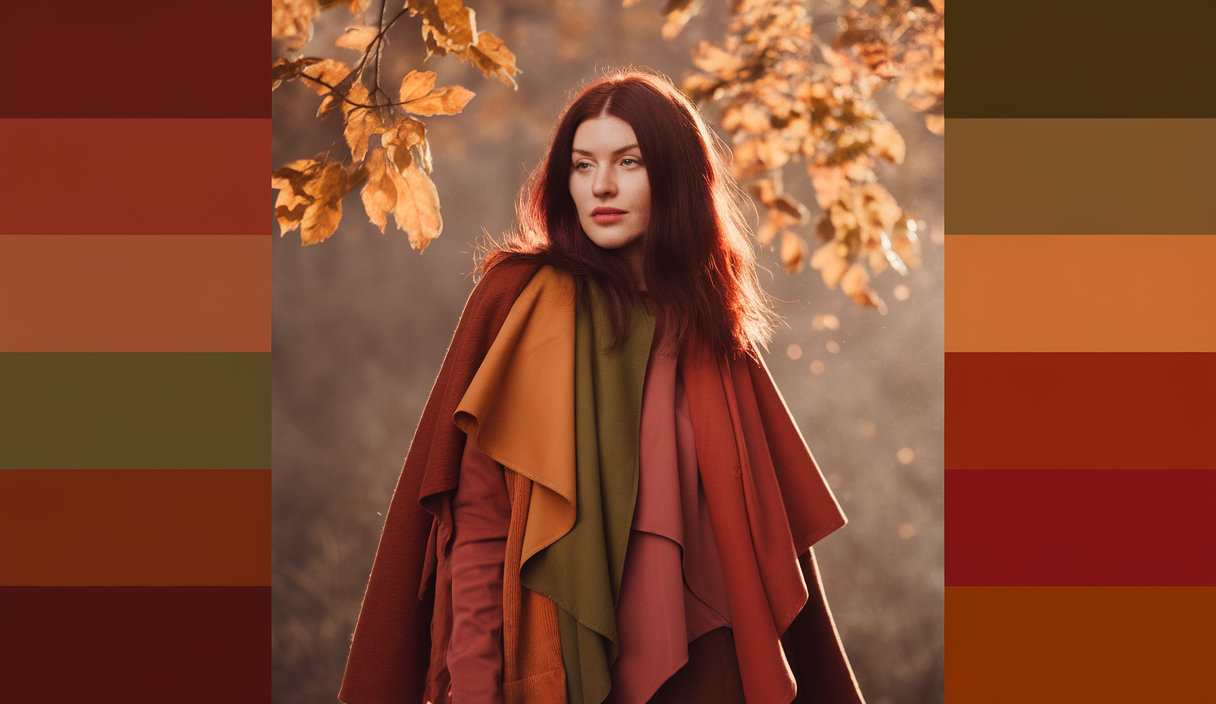
Autumn features warm, earthy, muted colors—cozy, grounded, and deep. It flatters golden or warm undertones, including natural redheads and warm brunettes.
Muted and Rich
Terracotta, olive, burnt orange, deep camel, muted teal, moss green, walnut, rust, and ochre mix harmoniously. Combine thoughtfully for depth and variety.
Deep and Earthy
Brick red and mustard evoke turning leaves and amber light. Pair richer hues with simple neutrals like cream, warm stone, or gentle brown to keep looks balanced.
Best Fabric Textures
Autumn glows with rich textures: wool, cashmere, corduroy, and suede. Lightweight cottons and linens can still work—use them strategically.
| Fabric Texture | Best for Autumn | Best for Spring |
|---|---|---|
| Wool | ✓ | Rarely |
| Cashmere | ✓ | Rarely |
| Corduroy | ✓ | No |
| Suede | ✓ | No |
| Linen | ✓ | ✓ |
| Cotton | ✓ | ✓ |
Navigating Ambiguous Features
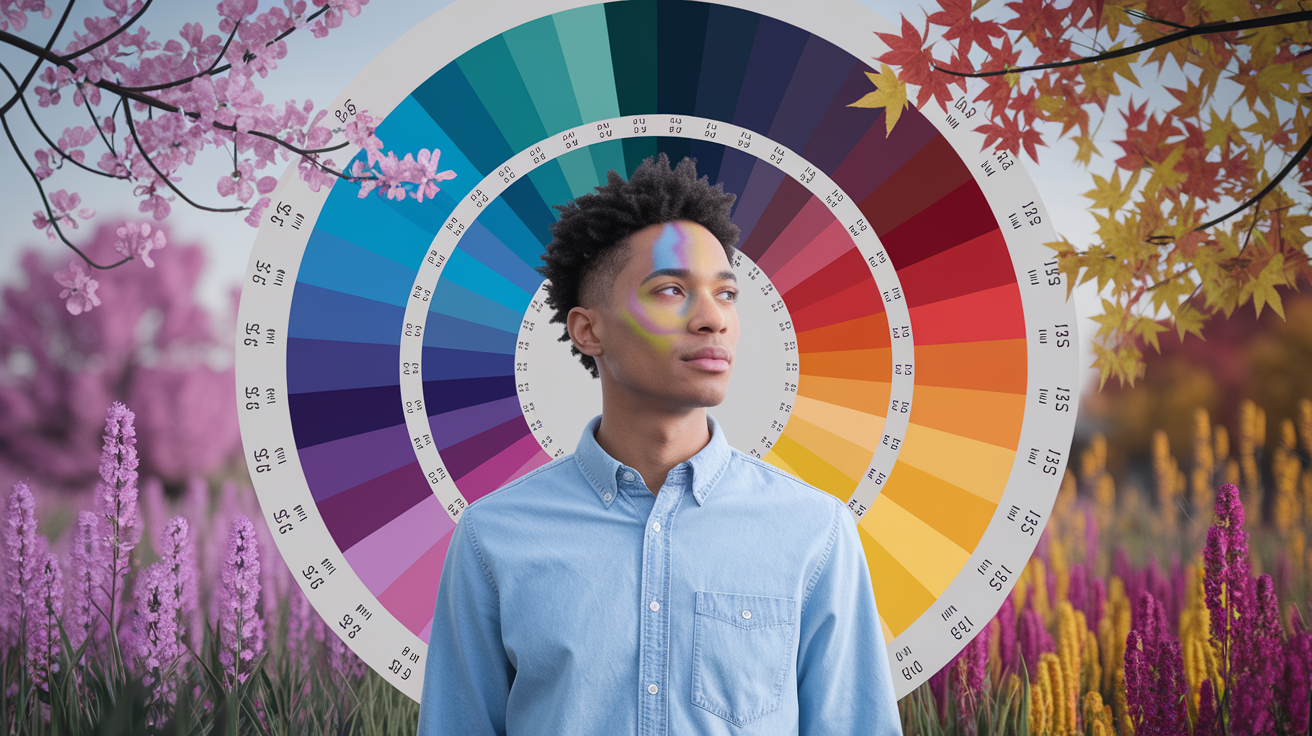
Not clearly Spring or Autumn? Consider your undertones, how you tan, and how colors shift under different lights. Document with notes or photos to spot patterns.
When You Tan Easily
Tanning can shift undertones, complicating analysis. Try a Spring coral one day and an Autumn rust the next—note which enhances your natural warmth.
Neutral-Warm Undertones
Neutral-warm undertones can wear from both palettes. Good exploratory shades include:
- Warm beige
- Apricot
- Soft coral
- Olive green
- Light camel
- Muted gold
Borrowing from a Sister Season
Mix Spring light brights with Autumn grounded hues (e.g., light teal with moss green) to create a personalized palette that still harmonizes.
Building Your Personal Wardrobe

Choose clothes that coordinate with your palette so outfits feel cohesive by default. Guidelines help, but your style should feel personal and lived-in.
A wardrobe that fits your seasonal color analysis will help you look and feel your best. Knowing your own skin tone, hair, and eye color will aid you in identifying your core colors. For most, spring and autumn types have warm undertones. Springs tend toward light, clear colors and autumns toward rich, earthy colors.
Selecting clothes that coordinate with your palette makes you pop without even trying. Still, some folks feel constrained by rigid color guidelines. It's okay to throw in those pieces you adore, even if they aren't in your "season." We want a wardrobe that feels like you, not a color chart.
Core Neutrals
Core neutrals are your foundation. They are the workhorse of any wardrobe, no matter your season. For spring types, soft beige, warm ivory and light camel are ideal. These hues go well with light blues, corals or soft greens.
Autumn sources should seek out chocolate brown, olive and camel. These colors sit well with burnt orange, mustard and forest green. A combination of light and dark neutrals provides you with more mix-and-match possibilities. Start with these essentials: trousers or skirts in your best neutral, a classic blazer, simple tops, and a coat.
For spring, consider light tan pants and ivory shirts. For fall, brown skirts and olive jackets are sure fire bets.
Accent Colors
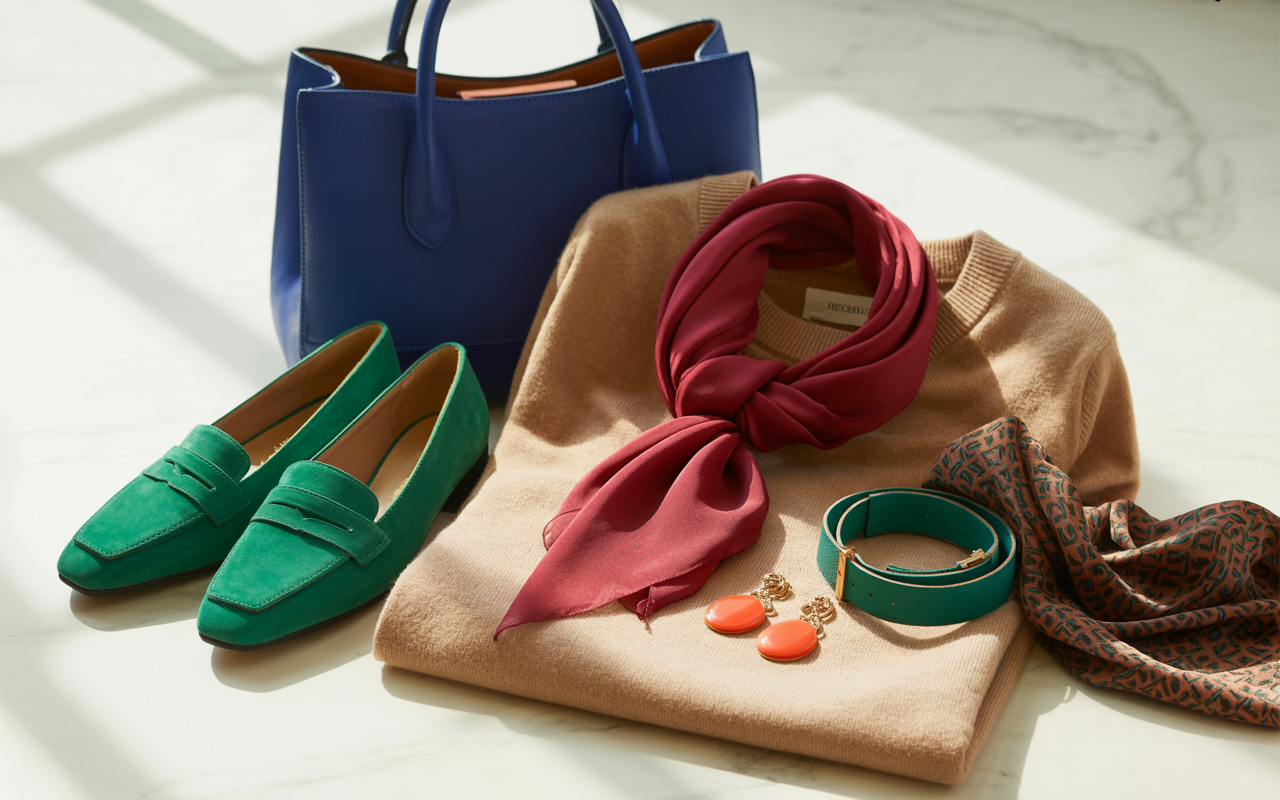
Accent colors bring life and demonstrate your style. If you like a pop of color, add a scarf, bag, or shoes in one of your best shades. Spring wardrobes may incorporate peach, aqua and coral. They're happy and play beautifully with light neutrals.
Autumn accents could be rust, teal or mustard. These colors warm up every look. It's nice to experiment with bright colors – just keep them close to your face if they compliment your skin tone. Something like a soft green scarf to a beige sweater for a spring, or a rust bag to an olive jacket for autumn.
Mixing two accent colors, like teal and mustard, can make outfits more playful.
Makeup and Accessories
Makeup and accessories are simple ways to have some color fun. Coral or peach lipsticks suit the spring colors, whereas deep reds and terracotta work well for autumn. Gold jewelry complements both, but spring types can wear rose gold, too.
Play around with eye shadow in sage or olive if you're an autumn or pastel pink if you're a spring. Accents – scarfs, hats or bags – should resonate with your best accent colors. For spring, go mint or blush pink; autumn can take mustard or teal.
Conclusion
Spring colors evoke a light, fresh brightness, like a crisp day with muted greens and peach. Autumn looks rich, deep, and earthy — like a forest walk with burnt orange, olive, and gold. Knowing your best season can make shopping less difficult and help you select clothes that look great and feel right. If you're still fuzzy, sample some of each and observe how you feel in them. Color can transform an entire attitude or illuminate your best. Experiment with fresh hues and discover what suits you—your ideal color narrative begins with baby steps.
Frequently Asked Questions
What is the main difference between Spring and Autumn color analysis?
Spring color analysis and autumn color analysis both feature warm undertones. The main difference lies in brightness: true spring colors are light and vibrant, while true autumn colors are rich and muted.
How do I know if I am a Spring or Autumn type?
Test your skin, hair, and eye color to determine your seasonal color palette. Spring color analysis reveals that warm spring individuals often have lighter hair and clear eyes, while true autumns typically feature darker hair and warm, golden highlights.
Can someone have features of both Spring and Autumn?
Yes, there are those who embody traits from different seasons, such as warm spring individuals and true autumns. In these instances, experiment with colors from both seasonal color palettes and notice which makes your complexion appear more vibrant.
Why is undertone important in color analysis?
Undertone determines what colors will look best on you. Warm undertones align closely with warm spring colors and true autumn shades, enhancing your appearance with a vibrant seasonal color palette.
What are the best colors for Spring types?
Spring types shine in a seasonal color palette featuring distinct, sheer, and warm colors like peach and coral.
What are the best colors for Autumn types?
Autumns feature warm, earthy colours like olive, mustard, and terracotta, showcasing true autumn shades.
Can I mix colors from both palettes in my wardrobe?
Yes, but on the shades from your seasonal color palette that bring out your features best. Mixing works best if you balance the brightness and warm tones for harmony.